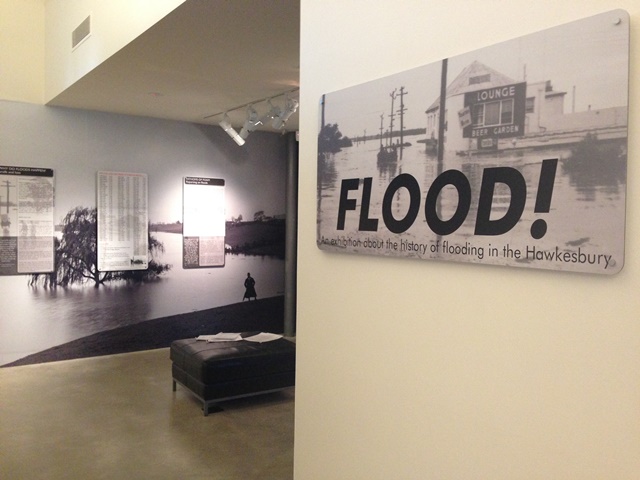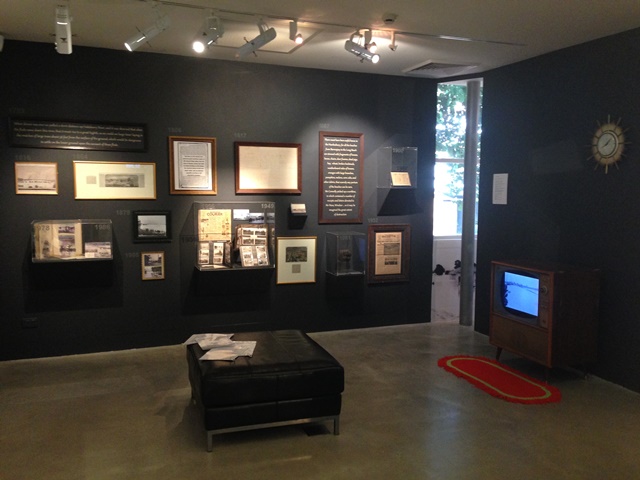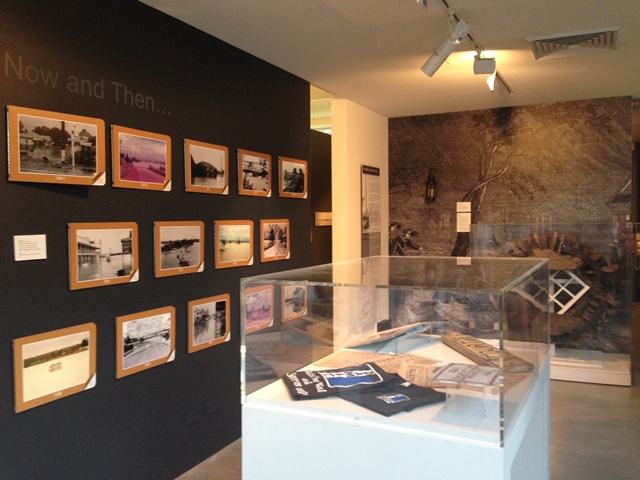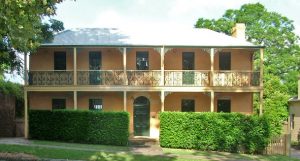Floods have a way of demarcating time in a town’s collective memory. There is the time before a flood when you watch the water rise and rise and people scramble to move possessions to a higher ground. Then there is the time during a flood when normal activities in the town cease; shops close and school is cancelled. Finally, when the waters subside, you survey the damage, mop up the mud and hope to avoid the snakes that have moved to higher ground.
Floods bring smells and sounds that are never forgotten. Locals who carry the oral traditions of a place compare flood stories and exchange memories. And that’s how it is in the Hawkesbury district, where I grew up. Replete with colonial and agricultural history, the Hawkesbury is also a place with a flood history that stretches way back.
Flood! At the Hawkesbury Regional Museum does a fantastic job telling the story of Hawkesbury River floods from the time of settlement through to the last flood which occurred in 1992. That year I had a day or two off school due to the flood waters. I also remember the floods of 1988 and 1989 when friends had to evacuate their homes situated not far from historic Tebbutt’s Observatory.
Flood! does a fantastic job telling the story of Hawkesbury River floods from the time of settlement through to the last flood which occurred in 1992.
Flood! tells of economic and human loss as well as stories of heroism, resourcefulness and survival. Accompanied by a fantastic selection of photographs, the section of the exhibition called ‘Now and Then’ where you see a photograph of a location in flood, and then fold that photo back to reveal the same location when not in flood, is one of the highlights.
Thanks to television’s coverage of floods we’re all acquainted with the devastating economic effect on farmers who lose valuable livestock and sometimes their beloved pets in flood waters, along with their crops. In terms of human loss though, it’s harder to imagine how entire families could die in a flood. But that’s exactly what happened in June of 1867, when 12 members of the Eather family were tragically swept to their deaths after clinging to their rooftop for 20 hours.
At times large numbers of people have had to be rescued in treacherous and powerful waters, such as in 1806 when over 300 people were rescued. However, it was not until after the devastation of the 1867 flood, when the Eather family died so horrifically, that the first volunteer flood-brigades were formed.
Flood! curated by Rebecca Turnbull, is an excellent example of how local museums are important for their communities. By encouraging the telling of local stories in personal ways; by describing their heroes, their villains, and exploits, intrigues and injustices, communities can heal and recover from adversity. Regional visitors are given access to the human fabric of a place, and a chance to develop their own sense of community connection.
So next time you’re in the Hawkesbury region be sure to visit Flood!
There’s also a walking tour around the area, which includes the historic Thompson Square, the oldest town square in Australia built in 1795 and currently under threat of redevelopment.
You may also like:
Narelle grew up in the beautiful Hawkesbury region and now lives in Sydney where she works as a museum educator. Her passions include visiting museums, travelling with her husband, and singing.
She reports on regional and Sydney based history and heritage, and gets down and dirty in new exhibition spaces.







